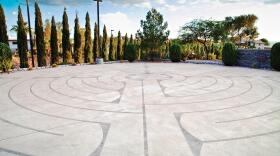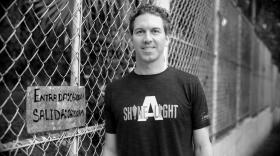Q: Where was the hot shopping spot in the Las Vegas of yesteryear?
A: For most of the 20 th century, Fremont Street was the historic, commercial and economic center of Las Vegas. It was the place where people shopped, gambled, caught a movie — and even the train. This was Las Vegas’ main street, where the community would gather and carry on the important business of the day.
It was also a cool place to shop. By the late 1940s, the community was rapidly growing, and a need for new shops and department stores developed. These new establishments would keep Las Vegas at the forefront of the latest fashions: retail shops such as Woolworth, Sears, J.C. Penney and local favorite Ronzone’s, a community staple for many years. J.C. Penney made a particularly strong impact when it announced in 1949 that it would build a brand new store on Fremont Street. At 27,000 square feet and two stories, it was the largest department store in Las Vegas — and the first with an elevator. Its ultra-modern façade with a decorative ceramic veneer — with the Penney name emblazoned across the front — framed large show windows displaying the latest in men’s, women’s and children’s styles. It opened on April 3, 1952, elegantly decorated just in time for Easter.
But even the mighty J.C. Penney could not halt downtown’s eventual decline. Developments such as the Paradise Palms community two miles south of downtown and The Boulevard Shopping Center (later the Boulevard Mall) prompted Fremont Street stalwarts such as Sears and J.C. Penney to pull up stakes and move south. By the 1970s and ’80s, Fremont Street would be almost exclusively hotels and casinos with a smattering of souvenir shops. The Penney building eventually became a medical center. But now things are coming full circle: Today, the former Penney building is home to the Emergency Arts complex, hosting The Beat coffee shop, art galleries and even a technology library, harkening renewed energy and enterprise on Fremont Street. — Brian Paco Alvarez
Brian Paco Alvarez is an urban historian and curator of the Las Vegas News Bureau archive.








